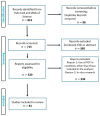Photodynamic Therapy for Treatment of Disease in Children-A Review of the Literature
- PMID: 35626872
- PMCID: PMC9140108
- DOI: 10.3390/children9050695
Photodynamic Therapy for Treatment of Disease in Children-A Review of the Literature
Abstract
Photodynamic therapy is a mode of treatment whereby local irradiation of an administered photosensitizer with light of a specific wavelength generates cytotoxic reactive oxygen species. Despite the upward trend in the popularity of this method in adults, it is not yet commonly used in the treatment of children. Due to certain limitations, underdeveloped treatment regimens and potential side effects, the use of photodynamic therapy in the pediatric population is still in the initial phases of evaluation in clinical trials.
Method: This study is a review of articles in English from the databases PubMed and Web of Science retrieved by applying the search term "photodynamic therapy in children" from 2000-2020.
Results: Based on the literature review, we analyze selected pediatric clinical cases in which photodynamic therapy was used for treatment in children. Examples of photodynamic therapy for treatment of dermatological diseases, diseases of the mucosa of the upper respiratory tract, halitosis, eye diseases and brain tumors are described. The paper describes the effectiveness of anti-cancer photodynamic therapy, including its use in antibacterial therapy.
Conclusions: The results of the analysis suggest the potential of photodynamic therapy for the treatment of various diseases in children.
Keywords: photodynamic therapy; therapy in children; treatment.
Conflict of interest statement
The authors declare no conflict of interest.
Figures



Similar articles
-
Photodynamic therapy and associated targeting methods for treatment of brain cancer.Front Pharmacol. 2023 Sep 28;14:1250699. doi: 10.3389/fphar.2023.1250699. eCollection 2023. Front Pharmacol. 2023. PMID: 37841921 Free PMC article. Review.
-
The Application of Antimicrobial Photodynamic Therapy (aPDT) in the Treatment of Peri-Implantitis.Comput Math Methods Med. 2022 May 12;2022:3547398. doi: 10.1155/2022/3547398. eCollection 2022. Comput Math Methods Med. 2022. PMID: 35602342 Free PMC article. Review.
-
Blue Light Photodynamic Therapy With Curcumin and Riboflavin in the Management of Periodontitis: A Systematic Review.J Lasers Med Sci. 2021 Apr 21;12:e15. doi: 10.34172/jlms.2021.15. eCollection 2021. J Lasers Med Sci. 2021. PMID: 34733738 Free PMC article. Review.
-
Microfluidic system with light intensity filters facilitating the application of photodynamic therapy for high-throughput drug screening.Photodiagnosis Photodyn Ther. 2022 Jun;38:102812. doi: 10.1016/j.pdpdt.2022.102812. Epub 2022 Mar 15. Photodiagnosis Photodyn Ther. 2022. PMID: 35304312
-
Photodynamic therapy mediated immune therapy of brain tumors.Neuroimmunol Neuroinflamm. 2018;5:27. doi: 10.20517/2347-8659.2018.31. Epub 2018 Jul 10. Neuroimmunol Neuroinflamm. 2018. PMID: 30221185 Free PMC article.
Cited by
-
Photodynamic therapy and associated targeting methods for treatment of brain cancer.Front Pharmacol. 2023 Sep 28;14:1250699. doi: 10.3389/fphar.2023.1250699. eCollection 2023. Front Pharmacol. 2023. PMID: 37841921 Free PMC article. Review.
-
Recent progress in hematoporphyrin monomethyl ether-photodynamic therapy for port-wine stains: updates and insights.Arch Dermatol Res. 2024 Nov 16;317(1):28. doi: 10.1007/s00403-024-03531-x. Arch Dermatol Res. 2024. PMID: 39549139 Review.
-
Efficacy and safety of hemoporfin photodynamic therapy in treating port-wine stains in Chinese children: a systematic review and meta-analysis.Front Pediatr. 2025 Jan 14;12:1501401. doi: 10.3389/fped.2024.1501401. eCollection 2024. Front Pediatr. 2025. PMID: 39877341 Free PMC article.
-
Effect of Arylazo Sulfones on DNA: Binding, Cleavage, Photocleavage, Molecular Docking Studies and Interaction with A375 Melanoma and Non-Cancer Cells.Int J Mol Sci. 2023 Jan 17;24(3):1834. doi: 10.3390/ijms24031834. Int J Mol Sci. 2023. PMID: 36768159 Free PMC article.
References
-
- Borgia F., Giuffrida R., Coppola M., Princiotta R., Vaccaro M., Guarneri F., Cannavò S.P. Efficacy and safety of conventional versus daylight photodynamic therapy in children affected by multiple facial flat warts. Photodiagn. Photodyn. Ther. 2020;31:101819. doi: 10.1016/j.pdpdt.2020.101819. - DOI - PubMed
Publication types
LinkOut - more resources
Full Text Sources

